Market snapshot: This week’s tape reflected a bifurcated investor thesis — a concentrated shift of capital toward AI compute capacity and infrastructure, while content and advertising franchises traded on governance, monetization plans and regulatory risk. Two datapoints capture that split: Alphabet’s moves into crypto-mining hosting and related analyst optimism (Baird raised its Alphabet price target from $215 to $275 and kept an Outperform), and active investor scrutiny at Disney over content decisions that reached the boardroom level as shareholders demanded records on the Jimmy Kimmel suspension.
Opening narrative: compute demand versus content governance
On the same day investors digested both a strategic bet on physical compute and a corporate governance flare-up, market behavior made a clear statement. Alphabet (GOOG) landed center stage with a string of AI-infrastructure arrangements — a reported $3 billion colocation/hosting agreement tied to Cipher Mining and other miner partnerships — and the Street responded with renewed conviction: Baird raised its price target on Alphabet and coverage noted the company’s dominant search and AI positions. By contrast, the media incumbents faced headline risk. Disney’s decisions around programming and its integration of Hulu into Disney+ put ARPU and retention metrics under the microscope, while investors pressed for disclosure. That combination drove differentiated flows: capital rotating into hardware- and cloud-adjacent exposures, and a more defensive posture around ad-supported and content-heavy names.
Sector deep dive 1 — AI infrastructure and compute demand
Standouts: Alphabet (GOOG), Cipher Mining (CIFR), TeraWulf.
What moved markets: Google’s backing of AI-hosting arrangements — including a roughly 5.4% stake in Cipher and backstopping of hosting obligations — crystallized the thesis that Big Tech is monetizing underused data-center and colocation capacity. The announcements were accompanied by mixed price action: Alphabet saw analyst optimism (Baird pushing its price target from $215 to $275) and reported after-hours gains of about 1.5% on news linking Google and Meta collaboration talks, while Cipher’s shares experienced intraday volatility and a premarket slip despite the headline deal.
Macro context: Corporate demand for high-density compute is being driven by generative AI training and inference workloads that require bespoke real-estate and power contracts. High-yield financing and leveraged loans are being used to scale capacity quickly — TeraWulf’s reported $3 billion plan and Cipher’s $3 billion hosting tie-up are symptomatic of a market where capital is funneled to physical compute, with technology firms hedging supply constraints via strategic stakes and long-term contracts.
Investor reaction: The mixed price and volume signals — analyst upgrades for Alphabet versus choppy trading for the mining names — indicate that institutional investors are distinguishing between durable platform franchises and high-capex execution risk. Expect trading activity focused on financing terms and project milestones (permits, interconnections, PPA signings) as near-term catalysts.
Sector deep dive 2 — Content, subscriptions and governance
Standouts: Disney (DIS), Comcast (CMCSA), Warner Bros. Discovery (WBD), Netflix (NFLX).
What moved markets: Disney’s operational decisions around high-profile programming prompted investor pushback; shareholder groups requested access to records related to talent suspension decisions, elevating reputational and governance risk into an investor-relations issue. Disney’s strategic integration of Hulu into Disney+ is being framed as a lever to lift ARPU and retention — a concrete monetization play that will be watched closely for subscriber and revenue per-user readouts.
Context: Media companies are at the intersection of content economics and regulatory scrutiny. As firms pursue consolidation of streaming assets to reduce churn and simplify pricing, investors are pricing in execution risk: subscriber migration friction, migration costs, and potential regulatory attention. Comcast’s more operational headlines — an internal hire for regional residential sales and mentions of low-volatility positioning for the stock — reflect a bifurcated investor appetite between stable cashflow names and companies exposed to advertising cycles.
Investor reaction: Volume patterns and shareholder activism (letters demanding corporate records) point to heightened institutional engagement. In some cases, that has translated to valuation repricing for companies with visible ARPU levers; in others, investors have favored income and yield — illustrated by AT&T’s declared quarterly dividend of $0.2775 — as a hedge against advertising cyclicality.
Sector deep dive 3 — Advertising platforms and social monetization
Standouts: Meta (META), Pinterest (PINS), Reddit (RDDT).
What moved markets: Meta’s product releases — an AI-driven short-form feed and partnerships to distribute AI wearables through Verizon — underscore the company’s push to sustain engagement and monetization. Meta’s ecosystem scale (Instagram reportedly surpassing 3 billion monthly active users and company revenue near $165 billion) buttresses investor confidence but also attracts regulatory attention in Europe and Southeast Asia.
Pinterest posted modest upside in a market pullback (closed at $33.45, +1.36%). That quiet resilience suggests selective investor interest in ad formats and e-commerce-linked monetization. Reddit’s share moves told a different story: the company’s stock closed at $232.75 on one session, down about 1–1.25% on reported declines, and later intraday selling followed a disclosure that the COO sold roughly $10 million of company stock — a classic signal that triggered short-term price pressure. Baird’s neutral stance on Reddit further reinforced a cautious institutional tone.
Investor reaction: The data show active rotation across ad franchises. Volume surges were concentrated around product announcements and insider activity: where positive monetization signals were issued, flows tilted long; where governance or insider sales surfaced, trading tilted toward de-risking.
Investor sentiment and market tone
Current sentiment is directional: institutional investors are pricing an industrial-grade demand shock for compute while treating creative and content risk as headline-sensitive. Evidence includes analyst upgrades on platform names (Baird on Alphabet), pockets of price appreciation (Google after Meta talks), and targeted selling around governance or insider liquidity events (Reddit COO sale and the subsequent price declines of ~0.6–1.25%). Yield-seeking investors are still active — AT&T’s dividend declaration and references to low-volatility Comcast positioning are examples of money seeking defensive cashflow in a higher-rate environment.
What to Watch Next
- Regulatory and legal milestones: anticipated EU antitrust activity against Google and U.S. appellate proceedings (Epic app-store case) could move risk premia for platform stocks.
- Execution updates on AI-hosting projects: funding closes, PPA agreements, and buildout milestones for Cipher and TeraWulf will determine whether financing risk is priced out or remains a drag.
- Subscriber and ARPU disclosures: Disney’s early integration metrics for Hulu into Disney+ and subsequent quarterly subscriber/account revenue details will guide valuation revisions.
- Insider activity and analyst revisions: further insider sales or new price-target moves (following Baird’s upgrade) will act as immediate catalysts for rebalancing across institutional portfolios.
Over the coming week and into the next month, expect headline-driven rotation between hardware/compute exposures and content/advertising names. The market currently rewards clarity on capital commitments and monetization roadmaps; it penalizes governance uncertainty and opaque execution plans. Institutional flows will likely be sensitive to definitive milestones — financing closes, regulatory filings, and subscriber metrics — that convert narrative into earnings visibility.












